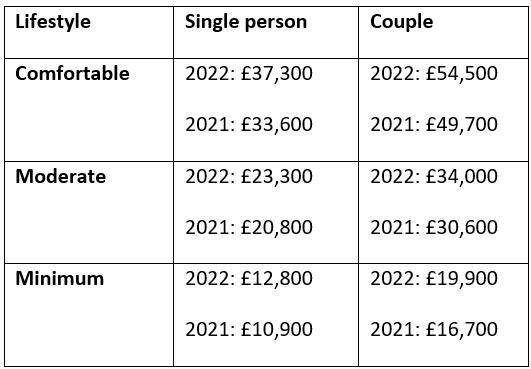Tax relief could boost your pension and mean you have more financial freedom in retirement. Yet it’s something that you may overlook when reviewing your pension, as analysis suggests that some workers aren’t claiming their full entitlement.
In fact, according to a report in The Telegraph, higher- and additional-rate taxpayers could have missed out on as much as £811 million of tax relief in the 2021/22 tax year.
So, how does pension tax relief work? Read on to find out.
Tax relief is like a bonus the government gives when you save for retirement
A pension provides a tax-efficient way to save for your future because of the tax relief you receive. Essentially, when you add money to your pension some of the money that would have gone to the government is added to your savings instead.
When you consider how this could add up over the long term, it means saving for retirement through a pension makes sense for two key reasons.
More money is going into your pension when you contribute so you could have a larger pot when you retire. As the money held in your pension is often invested, tax relief, along with other pension contributions, could grow further during your working life.
As saving into a pension is tax-efficient, contributing could reduce your overall tax liability. However, you should keep in mind that pension savings usually aren’t accessible until the age of 55, rising to 57 in 2028.
You receive tax relief at the highest rate of Income Tax you pay. The amount is calculated on your pre-tax earnings. So, as a basic-rate taxpayer, if you contribute £80 to your pension, you’ll receive £20 in tax relief, meaning a total contribution to your pension of £100.
To boost your pension by £100 in total, you’d need to contribute £60 and £55 as a higher- or additional-rate taxpayer respectively.
If you don’t earn more than the Personal Allowance, which is £12,570 for the 2022/23 tax year, you could still benefit from tax relief at a rate of 20%.
You may need to fill in a self-assessment tax return to claim your full entitlement
If you have a workplace pension, tax relief of 20% will usually be automatically added to your pension. This is known as “relief at source”.
However, if you have a different type of pension or you’re a higher- or additional-rate taxpayer, you will need to complete a self-assessment tax return to receive your full entitlement. You’d normally receive this additional tax relief through a tax rebate, which you can deposit into your pension if you choose.
It’s worth checking you’re receiving all the tax relief you’re entitled to, even if you believe it’s automatically added to ensure you’re not missing out. The Telegraph report indicates this is something many workers are overlooking.
How much tax relief can you claim?
If you can, contributing more to your pension could mean you receive more in tax relief so your money goes further.
There are limits to how much you can add to your pension before you could face an additional tax charge when you access your savings. These thresholds include the:
Annual Allowance: This is the amount you can add to a pension during a tax year while still retaining the benefits of tax relief. For the 2023/24 tax year, the Annual Allowance is up to £40,000 or 100% of your annual earnings, whichever is lower. There are circumstances when your Annual Allowance may be lower, including if you’re a high earner or have already taken an income from your pension. Please contact us if you have any questions about the Annual Allowance.
Lifetime Allowance: The Lifetime Allowance is the total pension benefits you can build up before suffering a tax charge. It covers the total value of your pension, rather than just your contributions, so you may also need to consider how tax relief, employer contributions, and investment returns will add up. For the 2023/24 tax year, the Lifetime Allowance is £1,073,100. The government has frozen the Lifetime Allowance until 2025/26.
Pensions can be confusing and you may not be sure if you’re saving enough for the retirement you want. Contact us to talk about your long-term goals and the steps you could take now to help you reach them.
Please note: This blog is for general information only and does not constitute advice. The information is aimed at retail clients only.
A pension is a long-term investment not normally accessible until 55 (57 from April 2028). The fund value may fluctuate and can go down, which would have an impact on the level of pension benefits available. Past performance is not a reliable indicator of future results.
The tax implications of pension withdrawals will be based on your individual circumstances. Thresholds, percentage rates and tax legislation may change in subsequent Finance Acts.


